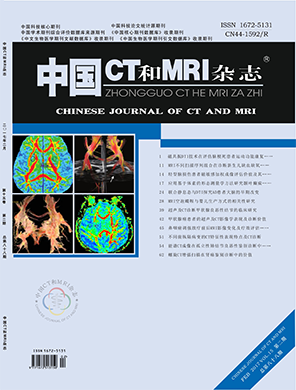论著-头颈部
痛风患者足部痛风石沉积特点的双能量CT研究*
作者:陈 谦1 陈兴国2 冯 源1 许 权1 吴前芝1 沈敏宁2 殷信道
所属单位:1.南京医科大学附属南京医院放射 科 (江苏 南京210006) 2.南京医科大学附属南京医院风湿 免疫科 (江苏 南京210006)
PDF摘要
目的 应用双能量CT对足部痛风 石常见沉积部位进行分析,并对痛风发病 机制进行探讨研究。方法 回顾性分析56 例痛风患者的足部双能量CT扫描检查资 料。将根据痛风石沉积部位分为关节组、 韧带/肌腱组,并分别对其进行记录、分 析。结果 56例患者中双能量CT共发现51 例患者有痛风石沉积。关节组最常见受累 部位为第一跖趾关节(75%,73/198),其 次是踝关节(33.9%,32/198)。韧带/肌腱 组中最常见受累部位依次是跟腱(39.3%, 37/99)、腓骨肌腱(16.1%,14/99)。结论 足部痛风石常见受累关节及韧带/肌腱分 别为第一跖趾关节及跟腱,足部痛风石的 沉积部位与特殊解剖部位、生物力学作用 等有关。
Objective To evaluate the distribution of tophus in foot using dual-energy CT (DECT)and to explore the pathogenesis of gout. Methods Fifty-six patients with gout had DECT scanning of both feet. The sites of tophus deposition were categorized into groups of joint, ligament/tendon and they were recorded and analyzed in order. Results The DECT scans showed tophus involving 51/56 (91.1%) patients. In the group of joint, gout affected the first metacarpophalangeal joint (75%, 73/198) mostly, followed bythe ankle joint (33.9%, 32/198).In the group of tendon/ligament, Achillestendon was the most commonly involved (39.3%, 37/99), followed bythe peroneal tendons (16.1%, 14/99). Conclusion In foot, tophus is commonly deposited at the first metacarpophalangeal joint and Achillestendon. The patterns of tophus deposition suggest that anatomical location, biomechanical strain or other local factors may contribute to the distribution of tophus.
【关键词】双能量CT;痛风;痛风石
【中图分类号】R445.3;R589.7
【文献标识码】A
【DOI】 10.3969/j.issn.1672- 5131.2017.02.035
前言
痛风是一组嘌呤代谢紊乱和(或)尿酸排泄障碍所致的代谢性疾 病,临床表现为高尿酸血症和反复发作的急慢性关节炎,晚期常合并 痛风石沉积、慢性肾脏损害、关节畸形等[1]。痛风性关节炎严重影响 人们生活质量,其中,足部是其最常累及的部位[2]。近年来,双能量 CT痛风石成像已广泛应用于临床,有研究报道指出双能量成像能够有 效区分痛风石和其他钙化及软组织结构,其敏感性和特异性可分别达 78~100%、89~100%[3-4]。国内有关足部痛风石沉积部位的研究较少, 本研究的目的在于使用双能量CT探讨痛风患者足部痛风石沉积特点与 表现。
中国CT和MRI杂志
第15卷, 第 2 期
2017年02月

相关文章